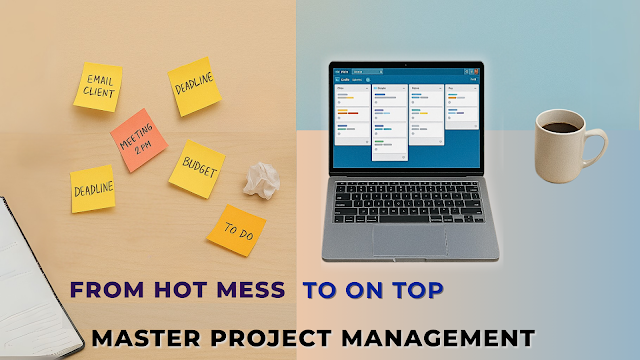To be honest, being a general virtual assistant just doesn’t cut it anymore. The VA industry has matured, and in 2025, clients are not just hiring for availability; they’re hiring for specialized expertise.
So, what’s hot? Which niches are booming? And how do you position yourself for top opportunities?
Here’s a breakdown of the most in-demand VA specializations this year and how you can navigate your way into them.
1. E-commerce Support VA: The Engine Behind Online Stores
E-commerce has grown and exploded. Behind every successful Shopify or Etsy store is a team (or a solo VA) keeping everything together.
What You’ll Do:
Handle product listings and keyword-rich descriptions
Manage order fulfillment, shipping updates, returns, and refunds
Provide customer support through email, chat, or DMs
Organize inventory and update store data in real time
Coordinate with suppliers and track deliveries
Why It’s Lucrative:
Online stores require consistency, particularly across their product catalogs and customer communication. If you can automate and optimize repetitive tasks, you become indispensable.
Tip: Know your way around tools like Shopify, WooCommerce, Canva, and basic email automation? This is your sign to lean in.
2. SEO Virtual Assistant: Visibility = Value
With AI search and voice queries becoming the norm, businesses are investing in search engine optimization more than ever. And they need people who understand how to rank.
What You’ll Do:
Perform keyword research and monitor search trends
Optimize blog posts, landing pages, and product descriptions
Conduct backlink outreach and manage off-page SEO tasks
Run audits using tools like Ahrefs, Moz, or Ubersuggest
Analyze traffic data via Google Analytics or Search Console
What’s New in 2025:
There’s now a huge shift toward Answer Engine Optimization (AEO) and Generative Engine Optimization (GEO); that is, creating content that AI bots (like ChatGPT or Google’s Gemini) can read and respond with.
Tip: Stay updated on how AI search is changing content. Businesses need SEO VAs who understand people and algorithms.
3. Content Strategy Assistant: The Storyteller Behind the Brand
In this new world of content, posting randomly just won’t do anymore. Brands are investing in people who think before they create; this is where the content strategy VA comes in.
What You’ll Do:
Build and manage content calendars
Conduct competitor research and audience profiling
Track the performance of blog, social, and email content
Support content audits and campaign planning
Collaborate with writers, designers, and video editors
Why This Niche Matters:
Many brands recognize the need to create content, but they lack the time or framework to do so strategically. You become their guide, not just their doer.
Tip: If you love planning, storytelling, and spotting content gaps others miss, this role is where your creativity meets systems thinking.
4. Project Management & Workflow Optimization VA: The Silent Force Behind Business Growth
Let’s not sugarcoat it, businesses are overwhelmed. Between juggling launches, client work, and content, most CEOs are one missed deadline away from burnout. Enter: the Project Management VA.
What You’ll Do:
Set up and manage systems like ClickUp, Notion, Asana, and Trello
Track project timelines, due dates, deliverables, and team responsibilities
Create workflows for recurring tasks (client onboarding, content batching, reporting, etc.)
Document SOPs (Standard Operating Procedures) so nothing is forgotten
Liaise with other remote teams and freelancers to keep everyone aligned
Why You’re a Lifesaver:
Clients don’t just want tasks done; they want systems that run on autopilot. A VA who can step into the operations space becomes their go-to for everything backend.
Think of it this way: The content strategist plans the WHAT. The project manager VA ensures the HOW happens, on time, every time.
Trending Skills in 2025:
Automations using tools like Zapier, Make.com, and Airtable
Workflow audits (spotting where time, tasks, or tools are being wasted)
Client onboarding/offboarding design
Agile or scrum-style task tracking for marketing, launches, or service delivery
Personally, I think this niche is one of the most underrated goldmines for VAs. If you’ve ever found yourself saying, “Wait, this could be done more efficiently,” or “There’s got to be a better system for this”, you’re already halfway there.
VA Specialization Combo Packages Are In.
In 2025, clients are looking for well-rounded experts. That’s why VA “hybrids” like these are thriving:
E-commerce VA + SEO Assistant (Product visibility + store management)
Content Strategy + Social Media Management VA (Plan + execute with insight)
Admin VA + AI Tool Integrator (Organize and optimize with tech)
In today’s market, niching down isn’t limiting, it’s liberating. When you specialize:
You command better rates
You get clearer about your services
You attract the right clients (not just any clients)
If you’re still offering “admin support, calendar management, and data entry” on repeat, it’s time to pause and ask: What do I do best, and who needs it most?
Need help refining your VA niche?
→ Then check out our free tools, training, and guidelines.

.png)
.png)



.png)


.png)
.png)
.png)
.png)
.png)
.png)
.png)
.png)
.png)

.png)
.png)
.png)
